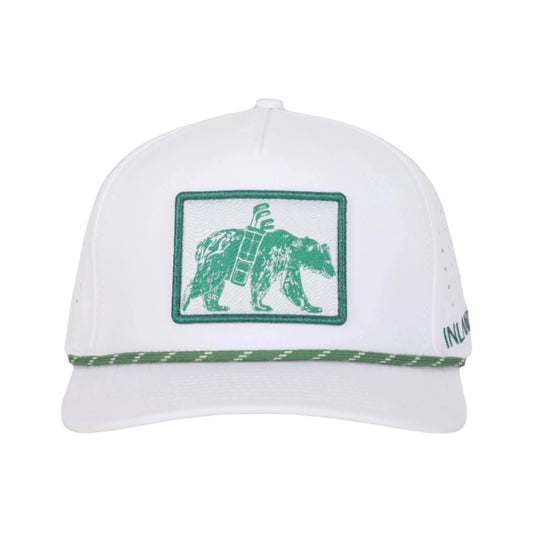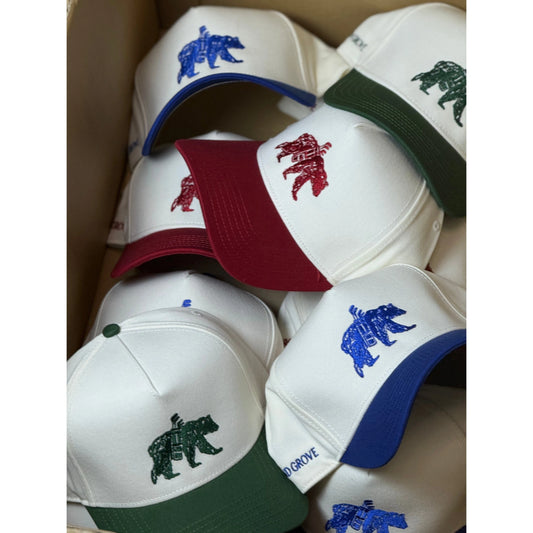
When to Wear a Golf Glove: Basics You Should Know
Whether you are a pro golfer or just a mere beginner, you have probably at some point asked, “Do I need to wear a golf glove?”
While it certainly isn’t mandatory to wear a glove on the golf course, there may be instances where better support and grip could be beneficial. From teeing off to approaching the putting green, deciding to wear a glove could either help or hurt your performance. We’re here to share the basics of using a golf glove and when it might be best to go bare-handed.
What is the Purpose of a Golf Glove?
Before getting into the details, it's important to understand the general use and benefits of a golf glove. While it can be a stylish accessory, it serves more than just a fashion statement.
The primary function of a golf glove is to improve a player's grip on the club. Made from materials like leather and synthetic fabrics, it helps prevent the club from slipping during your swing. Additionally, a glove enhances control over the club, leading to better shot accuracy.
Whether hitting long shots or putting, maintaining a comfortable hold is essential. A glove provides cushioning against the club handle and reduces friction, helping avoid cramps, calluses, or blisters.
However, weather conditions and game stages can influence whether wearing a glove is right for you. So, when might you want to wear a golf glove and what are the exceptions?
#1: Teeing Off
Teeing off is crucial, as it sets the tone for the game. At this stage, your swing needs to be fast and powerful to achieve distance. Many golfers wear gloves at this point because building momentum requires a firm grip on the club. A glove enhances grip and prevents discomfort from holding the club too tightly.
Exception: Weather Conditions
While a glove can help keep your hands warm and dry in wet or cold conditions, it may be better to go without in dry, mild weather. In ideal conditions, the natural grip provided by dry hands is often preferred by many golfers.
#2: The Fairway
As you move down the fairway, control over the club is critical. You may need to hit longer, more challenging shots. In these situations, a golf glove can be advantageous by preventing accidental slips during key shots.
Exception: Short Distances
For shorter, more delicate shots, many golfers prefer the tactile feel of bare hands. Removing the glove allows for a more direct connection with the club, giving a more precise, controlled shot.
#3: Approaching the Green
On the putting green, precision and finesse are vital. Many golfers opt to go gloveless during these short shots to feel closer to the club. However, if you’re a beginner or not fully confident with your putts, wearing a glove could offer more stability for accuracy.
Exception: Personal Comfort
Ultimately, wearing a glove while putting is all about personal comfort. If it feels restrictive or uncomfortable, don’t hesitate to go barehanded for that final shot.
Adapting to Weather Conditions
We’ve touched on how weather can impact your decision to wear a glove. Should you wear a glove in the rain? What about on a humid day? Weather plays a significant role.
On wet or cold days, a glove helps keep your hands dry and warm, preserving your grip and preventing slips. On the other hand, in humid climates, a moisture-wicking glove keeps your hands dry from sweat, ensuring a better grip.
In Summary
So, when should you wear a golf glove? It all depends on what feels best for you! While certain conditions and stages of the game may benefit from a glove, personal preference is the most important factor. Try playing rounds with and without a glove to see what works for your game. Only you can decide what brings out your best performance.
We hope this article was helpful! Subscribe to our website for more golfing tips and updates on future blog posts!







